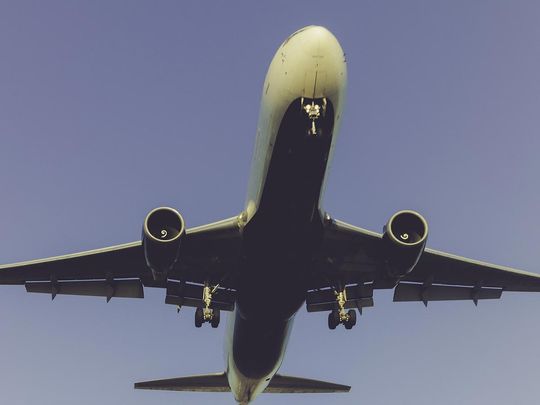By Steve McKinley Halifax Bureau
Sat., Nov. 20, 2021

There’s a subterranean menace stalking the highway outside of Whitehorse.
It is implacable, remorseless and, unless drastic measures are taken, inevitable.
If and when it reaches the Alaska Highway, many of the Yukon’s northern communities will be cut off from Whitehorse, as will that city’s only connection to neighbouring Alaska.
That’s why Fabrice Calmels, research chair in permafrost and geoscience at Yukon University, has dotted the area around it with sensors. He hopes to be able to give governments an early warning of the menace long before the ground begins to heave beneath their feet.
The menace is called a permafrost slump. It occurs when the permanently frozen layer of soil that underlies large swaths of Canada north of the 60th parallel begins to thaw.
When that layer contains a lot of water in the form of ice — in Canada, it most often does — and that ice thaws, the ground can often no longer support the weight on top of it.
When that happens, it can cause roads to sag or buckle. It can even cause sinkholes to open up in the middle of a roadway.
And, when the slumps happen, there is often a chain reaction — more permafrost is exposed to the air, accelerating the thawing, and the slumping becomes a runaway process.
/https://www.thestar.com/content/dam/thestar/news/canada/2021/11/20/this-little-known-climate-change-hazard-is-creeping-across-northern-canada-these-scientists-are-trying-to-fight-it/map_2_sites_ah_and_dh.jpg)
To be fair, the menace, located about 34 kilometres west of Whitehorse airport by road, is more of a tortoise than a hare.
It has moved 69 metres over the past five years, and it now sits 37 metres from the road. But it’s picked up the pace recently. Over the past summer — fuelled in part by a two-week spell of above 30 C weather — it has moved a whopping 18 metres.
If it continues at its current average pace — which is not a given — it will cross paths with the highway in two or three years. Yukon’s Department of Highways and Public Works is already looking at ways to mitigate the problem.
They’re considering everything from detouring the highway to finding ways to keep the permafrost cool to digging down to replace and stabilize the ground below the highway.
The problem, says Idrees Muhammad, manager of design and construction for the department, is that all those options are expensive, part of the cost of trying to build on permafrost.
/https://www.thestar.com/content/dam/thestar/news/canada/2021/11/20/this-little-known-climate-change-hazard-is-creeping-across-northern-canada-these-scientists-are-trying-to-fight-it/_fabrice_calmels.jpg)
Calmels’ sensors are the first stage of an early-warning system for permafrost slump, which he is developing in collaboration with his mentor, Michel Allard, professor emeritus at Laval University, who has similar sensors installed at three airports in remote Nunavik communities in northern Quebec for the same purpose.
“Permafrost touches everything,” says Calmels. “It’s always been difficult to build on permafrost.”
Everything that is built upon permafrost today incorporates measures designed to minimize the impact of that layer becoming unstable. Houses built on permafrost are built above the ground to allow air to pass below them, to keep the permafrost frozen. Roads cost five times more to build and maintain on permafrost than on non-permafrost ground because they must compensate for the possible movement of the ground due to changes in the permafrost layer.
But most of that technology is based on a relatively stable climate, says Calmels, one where there is a thermal equilibrium between the infrastructure, the air temperature and the permafrost temperature.
“But if our (global) temperature is rising, then it becomes a lot more difficult.”
When the warning system is finished, the scientists hope they will be able to automatically analyze the data coming from those sensors, predict if the thawing permafrost might cause a slump that could threaten those sites, and automatically send an alarm to those who need to know about such things.
Those warnings would come at two levels, says Calmels. The first, detecting smaller movements and temperature changes in the permafrost, would warn officials that there was a likelihood of a slump occurring in the near future. The second level, a massive movement or the loss of a sensor, would indicate that a slump — or a sinkhole — had just occurred, giving officials a chance to shut down any affected roads.
Calmels’ sensors, some deployed in boreholes drilled into the permafrost, each hour measure ground temperature at various depths, air temperature, soil moisture and precipitation.
They also include inclinometers, which can be used to produce information about whether the ground is moving, how much and how fast it’s moving and about its movement relative to other layers.
His team also surveys the slump from the air, using GPS markers and a drone to track its movement.
All the data goes into a data logger, which then sends the information to a nearby substation called a gateway. In the case of the Alaska Highway slump, that gateway is at a farmer’s place about a kilometre away.
From the gateway, the information is uploaded via the internet to a central computer at Laval University in Quebec City. There, an algorithm — now in the final stages of development — analyzes the raw data and determines if there’s a danger of an upheaval occurring in the near future.
There’s evidence this system works. During the past year, Calmels put sensors directly in front of the Alaska Highway slump, and, using the data he collected, was able to predict the next portion of the slump six days before it actually happened.
Eventually, the whole system will be automated, and if the algorithm determines an alarm should be raised, it will be sent out automatically via an email distribution list to whoever needs to know.
The project, funded in part by both the federal and territorial governments, is being undertaken in collaboration with Laval University.
/https://www.thestar.com/content/dam/thestar/news/canada/2021/11/20/this-little-known-climate-change-hazard-is-creeping-across-northern-canada-these-scientists-are-trying-to-fight-it/michel_allard_field_salluit_2016.jpg)
In Quebec, Laval’s Allard has placed similar sensors near the airports of three Nunavik communities — Salluit, Tasiujaq and Inukjuak — to keep an eye on whether any permafrost changes might lead to buckling runways.
Here, Allard is also concerned about thawing permafrost creating landslides, a similar process to the slumps in Yukon, but occurring on more of a slope.
When the permafrost layer thaws, the layer of ground on top of it, the active layer, which perennially freezes and rethaws, may be cut loose and start to slide. Scientist call that an “active layer detachment failure.”
“The idea is: how can we assess the risk that a landslide will occur in the future?” he says. “By what method can we make a warning system that will tell, for example, the mayor, the civil security organizations that, if the weather continues as it is going on now, the risk of landslides will be starting.”
Those kinds of warnings are vitally important in Quebec’s far North. There are 14 Inuit communities in Nunavik, all of which depend solely on their airports for supplies once the seasons change and ice closes off shipping access.
Once Allard and Calmels’ warning system is up and running, the three airports will have a little advance notice of changes in the permafrost that might affect airport runways. Allard says he’s already been talking with the government about expanding that warning system to the other 11 communities.
And it’s not a stretch to believe that the early warning system they’ve developed can be adapted to other, non-permafrost areas.
For example, given enough study, the network of sensors and the automated warning system could be applied to slopes in B.C., warning officials there when a mudslide or rock slide might be imminent, and sending off a widespread alarm when one has. That’s a warning that might have been useful during last week’s flooding and mudslides in southern B.C. that killed at least one person and trapped hundreds of people on its highways.
“This is not so complex, you know,” says Allard. “The key system is the data logger and the (local) communication. And those systems are widely available, and they can be deployed to anywhere in the world.
“So, if some specialist in landslides wants to send a signal, the system can be installed on their instrumentation and be put to use.”
Allard expects the automated warning system will be up and running by next summer.
Thawing permafrost isn’t just a problem for the Arctic. Here’s how it can impact the globe
By Steve McKinley
Sat., Nov. 20, 2021
There’s a reason scientists and climate change activists have been raising the alarm about the planet’s melting permafrost for the better part of the last decade.
That’s because as climate change causes an overall rise in global average temperatures, the consequent thawing of that perpetually frozen layer of earth in the Arctic has the potentially to drastically change people’s way of life, not only in the north, but across the globe.
At the local level, thawing permafrost has impacts on the way people — and animals — hunt, fish and otherwise gather food. It has further-reaching impacts on any man-made infrastructure built on it, which has consequential effects on access between communities in a region where those communities tend to be widely dispersed.
And thawing permafrost has impacts on a global level, where the process can contribute to the release of greenhouse gases into the atmosphere, which will, in a feedback loop, further speed the increase in global average temperature, thus causing more permafrost thaw.
Permafrost, by definition, is any type of ground that stays at or below 0 C for two or more consecutive years. In Canada, most of that permafrost contains water in the form of ice.
In practice, much of the permafrost that occurs in the world — predominantly north of 60 degrees latitude — has remained frozen for thousands of years. That includes great swaths of Canada, Greenland, Siberia and Alaska.
In those regions, there is a layer of ground at the surface that repeatedly thaws and refreezes as the seasons change. Scientists call this the active layer. Usually, it ranges from 0.5 to 2 metres thick, with the thinner active layers occurring in far northern regions, while the thicker layers occur near the southern boundaries of permafrost.
Underneath that active layer lies the permanently frozen permafrost layer. In regions where the temperatures are consistently cold, such as Ellesmere Island in the High Arctic, that layer can be 700 metres thick. Further south, as in Yellowknife, it becomes only a few metres thick.
At the interface of the two layers, the permafrost tends to contain a lot of water in the form of ice. This is significant because when ice-rich permafrost begins to melt, it undermines the stability of the ground above it.
When that happens, you may get sinkholes, you may get slumps in the earth, and in the cases where the ground is sloped, you may get landslides. Or, as the scientists dub it, an “active layer detachment failure.”
To a large extent, the thawing of a permafrost layer depends on two things: temperature and precipitation.
“If you have a warm winter where the winter is not cold enough to cool off the permafrost, it’s relatively bad. If you have a hot summer, it’s not good news either,” says Fabrice Calmels, the research chair for Permafrost and Geoscience at Yukon University.
“If you have a lot of snow in winter, it means that you will have a layer that insulates the cold air from the permafrost. So, it keeps the permafrost warmer because you put a blanket on it. So, a lot of snow is not good.”
If there’s rain, says Calmels, that’s not good for the permafrost either, because the warmer water will infiltrate the soil, move through its active layer and warm the permafrost beneath.
When that happens, things on the surface become disturbed.
The change in topology may be quite dramatic.
Old Crow in the Yukon is 800 km north of Whitehorse — a three-hour flight by plane, the only way to get there.
For generations, Zelma Lake, near Old Crow, has been a focal point of hunting and fishing for the Vuntut Gwitchin First Nation.
But in 2007, that lake suddenly, catastrophically, drained — the result, in part, say scientists, of melting permafrost opening up cavities under the lake.
That’s an extreme example. There are less sensational ones that may have wide-ranging long-term consequences.
Lakes turn into grasslands or ponds. Traditional trapping trails become inaccessible. Berries and medicinal plants aren’t able to grow where they used to.
In the same area around Old Crow, says Calmels, permafrost thawing has led to changes in the forest above. And as the forest degrades, a species of lichen that’s attached to that forest becomes more rare. And that particular lichen is a favourite food of the caribou. If the rarity of the lichen becomes widespread, it potentially means the caribou change their migration paths, meaning those who hunt the caribou will have to change along with them.
In areas where humans have built infrastructure on top of permafrost, the thawing of that layer often means upheaval of the ground above. And that means roads may become impassable — even developing sinkholes — and airport runways may become unusable.
And that’s especially problematic north of 60 where remote communities depend on those roads and airports for all their supplies.
Just outside Whitehorse, Calmels is tracking a permafrost slump that is edging its way toward the Alaska Highway. If that slump were suddenly to bisect the highway, all road contact between Whitehorse and some of the Yukon’s northern communities would be lost, as well as all access to Alaska.
In northern Quebec, scientists have sensors placed at the airports of three northern communities, hoping to predict any permafrost slumps before they happen.
But the cost of a thawing permafrost can turn out to be greater and a lot more global.
Buried within that frozen layer is a huge amount of organic matter. In the last ice ages, in Siberia and parts of the Yukon and Alaska, large portions of the Arctic were not covered by the glaciers that marched steadily south. In these organically rich regions lived some of the planet’s legendary — now extinct — megafauna, the woolly mammoth and the great auk, as examples.
When the ice age receded, all that organic matter, along with huge amounts of plant biomass, were buried and remains frozen in the permafrost.
But when that organic matter is again unfrozen and exposed to air — when the permafrost surrounding it melts — nature’s organic chemical processes resume. The organic carbon is broken down by bacteria into carbon dioxide and methane.
The permafrost, once a carbon sink, now becomes a source of greenhouse gases.
And those greenhouse gases contribute to the warming of the atmospheric temperatures, meaning they will, among other things, expedite the process of thawing the permafrost.
Steve McKinley is a Halifax-based reporter for the Star. Follow him on Twitter: @smckinley1
















